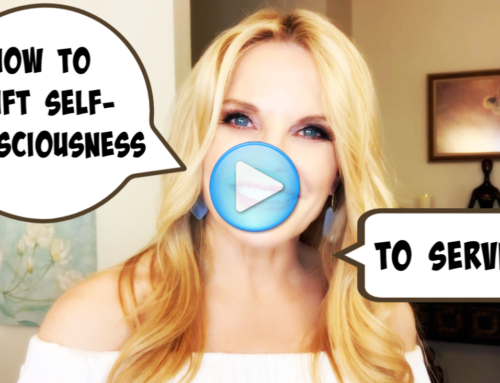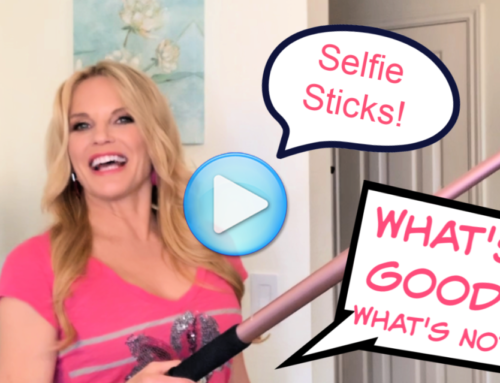Instead of me having a breakdown, I’m focusing on me
having a breakthrough. ~ Terrell Owens
If you are an adult, you likely realize there are always “two sides to every coin,” or as Dr. Phil says, “No matter how flat you make a pancake, it has two sides!”
In most, if not all cases involving personal interaction, they are likely to be even more than two sides (consider the edges, for example). Think of these “sides” as the perspectives, opinions and attitudes we use to color our world in a very personal and unique way.
I would like to share some powerful steps I have learned over the years of my own personal work to turn your breakdowns in communication into breakthroughs. If you are willing to use them, these steps will work regardless of your circumstances and situation.
As you move through the process, it may help to think of this as a way to use everything – even events we regard as “negative” – in order to learn, uplift ourselves and others, and grow. You can apply this in business, at work, at home or with your friends.
Before reading ahead, think about a recent upset.
For example, perhaps you argued with a colleague at work, or your mom is mad at you for forgetting to call her. Perhaps you feel frustrated because your team at work is marching in another direction and you feel apprehensive about how to communicate with them.
You may choose to practice moving through the steps with a smaller upset before moving into a more significant or emotional one. Or, you may want to go for the gusto and select a pervasive and long-lasting upset you’re truly sick of putting up with.
STEP 1: Declare that there is a breakdown.
This seems simple, but most of us would rather avoid this step than to admit things aren’t working.
We live in a “fix it” world and breakdowns are often viewed as failures. No one wants to think of themselves as a failure. So, instead of admitting to a troubling issue that may lead to new action and improvement, we often end up putting up with the same old situation so we don’t blow our cover.
Bottom line, the quicker you declare that there’s a breakdown, the quicker you can have a breakthrough!
STEP 2: Gain clarity on the situation.
With as much neutrality as possible, honestly assess the situation.
Simply look on as many levels as you can: physical, emotional, mental and even spiritual. What’s going on? What are you feeling? Are you hurt? Are you disappointed? What is missing?
Check in, take an inventory, try to go below the obvious levels, and do nothing more right now. Your aim is merely to observe what is going on with you.
STEP 3: Take responsibility for your part.
What got triggered? Did you somehow initiate your own upset? Have you kept it going? Are you unable to stop?
Human beings are the most powerful creators on the planet, yet we are often not conscious of our intention to create breakdowns. In this game, the ticket to a breakthrough is to be 100% responsible (but not guilty) for our experience, even when we don’t understand how or why we are finding ourselves in a breakdown.
When we take responsibility for our part, other players often miraculously begin to own up to their parts as well.
STEP 4: Assess your original vision, mission, goals or objectives.
Where were you headed in the first place? What do you want to accomplish? What experience are you looking for?
With respect to the issue or situation you’re grappling with, revisit your original vision, mission or goal, if you see there has been something missing – add it now. If you don’t currently have a vision, mission or goal, create one now.

STEP 5: Recommit to your vision, mission, goals or objectives.
This step is easier said than done, but extremely important because it provides you with a road map for moving forward into new and uncharted waters.
Take whatever information you got from step 4 and commit to it. Write it down, say it out loud and ideally you also want to share it with someone else who is willing to help hold you accountable.
If your vision, mission, goals or objectives involves other people, be sure they are in agreement with the direction you want to go in. If not, renegotiate to come up with something that works for everyone involved.
STEP 6: Forgive, forget and let go.
Last but not least, check to see if there are any judgments that you’ve put on yourself or someone else. If there are, forgive yourself and others and let it go.
When we try to move forward without letting go of the past, it has a way of sneaking its way back into our present…. and future! To avoid this, do your best to forgive and let go. This gives you the opportunity to complete your breakdown, and marks the beginning of your breakthrough.
To forgive, simply say these words either silently or out loud: “I forgive myself for judging myself (or another) for (fill in the blank)…”
Go ahead and see what happens!
Guest post by Dr. Barbara Schwarck
 Dr. Barbara Schwarck is the CEO of Clear Intentions International (CII), a global executive coaching firm that uses a combination of neuroscience with executive coaching to help clients break through barriers and align their intentions at every level of themselves, in support of their aspirations – both in life and at work. Barbara is also the author of the book “From Intuition to Entrepreneurship.”
Dr. Barbara Schwarck is the CEO of Clear Intentions International (CII), a global executive coaching firm that uses a combination of neuroscience with executive coaching to help clients break through barriers and align their intentions at every level of themselves, in support of their aspirations – both in life and at work. Barbara is also the author of the book “From Intuition to Entrepreneurship.”
Want more free tips on how to create a wealth consciousness and an abundant work-from-anywhere Internet business? Subscribe here for free updates!














More of a ? really. I am a trauma survivor and have my “agency” all messed up. How do I have an intention when this goes against the way my brain works and I’m not familiar at all with how to do this? When I think about what I want or need I draw a blank. This comes from the inescapable horror part of being an abused child. Any suggestions? Great article! Thanks
Hi Aspasia! Some trauma survivors (and those struggling with PTSD) have told me they benefited from a meditation or relaxation practice first. A guided meditation for progressive muscle relaxation especially seems to encourage a relaxation and release of those tensions for them. Then, with the feeling of safety that comes with practice, the feeling of relaxation and safety that is associated with the therapist they are working with; or their current environment; or even sometimes, it’s simply the voice of their “guide”… seems to help them allow that relaxation as they move on to other visualization and relaxation techniques. I’m not a therapist so I can’t offer specific guidance to you in this area but if there is one suggestion from feedback I’ve gotten myself, it’s that. Start there. I’m sorry that you have this additional challenge, but please realize that you’re not alone. There are others “working with” and overcoming this situation out there. It’s important that you know it’s possible. 🙂